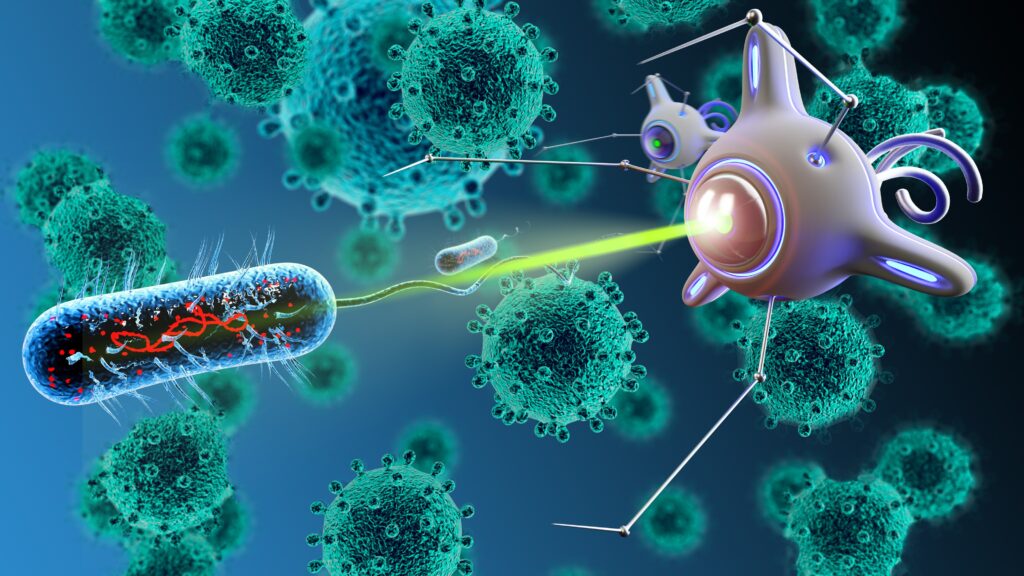The last few centuries have seen a higher growth in wealth and living standards than in the rest of human history. Certainly partly also thanks to economic growth and technological innovation.
Most of human existence has been described as “nasty, brutish, and short,” with zero growth and improvement in living standards over long periods of time. Everything changed about 200 years ago, with the Industrial Revolution and the technological development that followed.
However, this technological development had a cost: a tangible negative effect on the natural world. And perhaps today this cost in some respects can become unsustainable.
For this reason, many now believe that we may have reached the limits of economic and, by extension, technological growth.
But it's true? Let's try to understand something.
Secondo J. Bradford DeLong, professor of economics at the University of California, Berkeley, until 1800 the average GDP per capita was the equivalent of about 200 euros. After this period, GDP per capita increased rapidly, reaching 6.500 euros around 2000.
Most of the benefits of this growth have been enjoyed by a handful of nations, although some sort of acceleration has also affected least developed countries. Generally, albeit with some disparity, parameters such as per capita wealth, higher life expectancy or mortality rates from disease and malnutrition have been significantly improved.
But how was this technological development achieved?
The answer is, in part, thanks to what Adam Smith called “the division of labor.” Giving more and more people the opportunity to specialize in particular tasks has enabled an explosion of technological development.
The heavy downsides of the coin
We are finally starting to understand that this system has also led to excessive consumption of resources. The natural world suffers tremendous collateral damage from this growth. From microplastics to heavy metals, from fertilizer abuse to climate change, we are terrible stewards of this wonderful planet.
Some consider what happens as proof that growth cannot continue forever. Exponential growth would entail the consumption of more resources, the continuous loss of ecosystems and ever larger mountains of waste and pollution.
Not to mention a growing inequality between wealth and poverty.
It has always been like this, in fact. But it does not mean that this trend should continue in the future.
Technology may have contributed to these problems, but it may also be the cure for them. But first, let's unpack the idea of a finite planet.
What is a “finite” planet?
Each planet, including Earth, has a certain amount of resources to offer. A limited quantity, even of raw materials.
Yes, the Earth is very large, but on balance and at least for now only a small part of it (the outermost crust, the oceans and the atmosphere) can be exploited by humans.
This line of thinking assumes that resources can only be consumed a limited number of times. But, as we know, energy (and by extension, mass) cannot be created or destroyed, only changed in form.
In theory, at least, since everything we create from terrestrial raw materials remains on the planet, we could, with the right technology, reuse it an unlimited number of times.
Yet Earth seems to lose mass over time. It is estimated that somewhere they get lost in space 50.000 tons of terrestrial matter every year. Don't worry: it would take an enormous amount of time to lose a significant part of our planet, and that's not the point of the article anyway.
The risk of a catastrophe
Prolonged excessive consumption of resources on Earth will likely cause irreparable damage and the potential loss of its life support system: the biosphere. We need access to breathable air, food, clean water and a habitable environment to survive. And they are in very grave danger.
Constant technological development at the expense of the environment will inevitably reach its limit. The delicate balance of ecosystems will be savagely destroyed, leading to mass extinctions, melting of the polar ice caps and other catastrophic events. In such a scenario, what is the point of pursuing “wealth” if we will not be able to survive?
Can economy and technological development continue to grow forever on a finite planet?
If we limit our thinking to a single planet, like Earth, it is theoretically possible to have unlimited growth. But we will need an efficient way to use raw resources or reuse "old" ones in harmony with the natural world.
Is crucial. Unless, of course, we find a way to produce nutritious food, clean water and breathable air only with our technology.
But one thing is clear, we cannot have continuous growth in technological and economic terms if it translates into irreversible damage to the planet.
This is why sustainable development becomes the key to technological development in the future. We must separate economic growth from its potential damage to the environment.
To some extent, we are witnessing the beginnings of this process today.
For example, there are signs that a society with a certain wealth threshold also acquires awareness of the need for a “cleaner” life, less wasteful and more efficient in the use of resources.
To put it briefly: once all basic economic needs have been met, people allow themselves the "luxury" of preserving their surrounding environment. For many richer nations, this has been achieved in part by exporting their “dirtier” needs to poorer nations. However, some have also been proactive in developing environmental protection laws.
In summary: what types of technological innovation could theoretically enable infinite growth? Let's take a look at the future.
Robotics

Automation is likely to continue to become more sophisticated and take on more and more laborious and repetitive tasks.
Pro
Robots are suited to performing tasks that require a high level of precision or speed, or that do not provide the opportunity to rest.
As long as their parts are in good condition and they have the resources, such as electricity, they can continue to work indefinitely.
Robots are also becoming increasingly complex in design and capabilities. They can even build other robots on their own. In some areas, robots have increased productivity to levels unthinkable with the use of humans alone.
Robots have the potential not only to improve the efficiency with which we use natural resources and reduce our impact on the environment, but also to reduce waste caused by manufacturing errors.
Cons
Robots in turn require a large supply of resources in their construction.
They can send many people to the ground, supplanting their work. They should produce enough excess capital to support workers who remain at home, perhaps with measures such as universal income.
3D printing and additive manufacturing

Two sectors that will be of fundamental importance in future technological development.
Conventional subtractive production may no longer be the most efficient way of producing things. The very nature of this technique (starting from a raw material and subtracting / cutting / modeling) often leads to the waste of natural resources.
Pro
3D printing or additive manufacturing are incredibly efficient when it comes to using raw materials to build objects. Very few basic materials are wasted, and processing waste can be recycled more easily for reuse.
Since additive manufacturing allows many materials to be printed on demand, the supply chain is greatly reduced. One day on-site 3D printing could replace the huge warehouses.
Versatility is another key factor: 3D printers have been developed that can even print food, medicine and human organs. Many industries, from aerospace to automotive and healthcare, have already embraced additive manufacturing.
Cons
Even 3D printing tends to consume on average more energy than traditional methods. Of course, a cost compensated by lower costs in transport and other collateral factors, but with the restrictions on the types of materials that printers can use is one of the main obstacles to their use, at least for now.
That said, 3D printing will improve further, and will certainly be an important technology to help maintain the technological and economic development of the future.
Nanotechnologies

One technology that could produce an unlimited future of growth is nanotechnology. It is incredibly promising. It is quite possible that nanotechnology will soon allow the development of materials such as metals not subject to temperature, or with elastic memories. Such materials could significantly reduce the consumption of raw metals by significantly extending their service life.
Nanotechnology could also lead to paints that warn of overheating or medical surfaces capable of detecting pathogens. They could also produce shatterproof glass that changes from opaque to transparent, reducing the need for more materials.
Nanotechnology can also produce non-toxic fertilizers for the environment, or more effectively filter seawater into drinkable water.
Nanotechnology robots, also called nanites, may one day be able to transform even our waste into useful raw materials, or make harmless distant toxic.
These are just some of the wonderful environmental benefits that could arise from nanotechnology. By optimizing the use of resources while reducing waste, nanotechnology is an example of how technological development could enable continued high growth rates far into the future.
Internet

The rise of the Internet has changed the way we do many things. It has also created many new industries never dreamed of before.
Above all it brought a completely new way of making money: the digital economy. Over the past few decades, a vast swathe of new businesses has emerged, each with unlimited (theoretical) potential.
Creating and distributing ideas and other services has never been easier. Furthermore, it has never been easier for people to start their own business, thanks to the internet.
The only real limit to the growth of the Internet is energy-related. Finding an ecological solution to this problem will require the development of different energy generation systems (including nuclear, photovoltaic, wind, hydrogen cells and more).
The possibilities of the internet are still amazing. From making cars autonomous to revolutionizing agriculture, the internet of things (IoT) it promises to make our lives easier, and perhaps even less harmful to the environment.
Smart homes, using the IoT, could enable near-autonomous waste management and reduction, including more efficient uses of energy, water and other resources.
Sensors and other monitoring devices can already be used to collect data and monitor parameters such as pollution levels and air quality.
But IoT can also be used to directly help nature. It is already used to protect bees or fight poaching.
Space exploration

If none of what I described worked, technological development could obtain potentially unlimited resources from space. From meteorite mining to colonizing other worlds, one day thespace exploration it could provide a means of infinite technological and economic growth.
If we can turn the exploitation of space resources into reality, we will never have to worry about limited resources again. But this will require a significant investment of energy, technological development and, yes, resources, to become reality.
In summary: living “at zero cost” to resources and the environment will require time and money well spent. It will truly be an investment in the future of our species and the planet.


